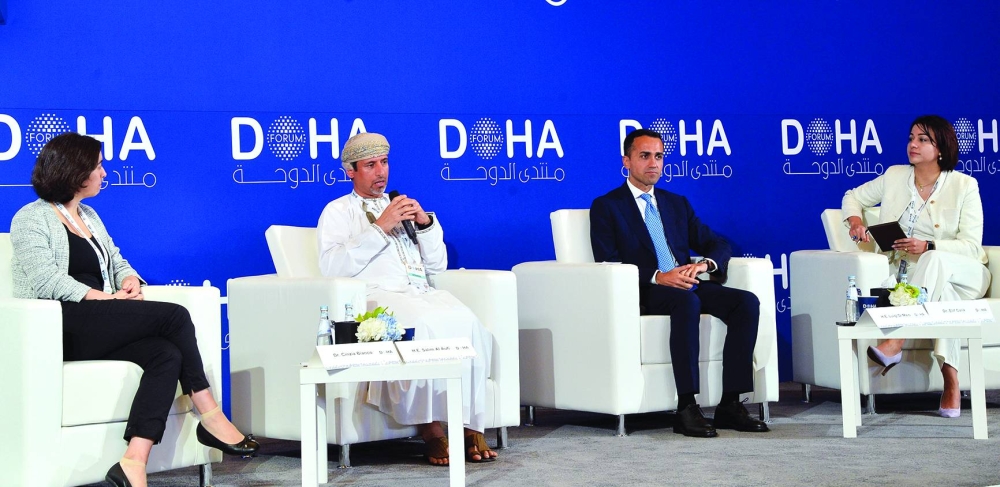Oman has accelerated its infrastructure development and the forging of global partnerships for green hydrogen expansion, Salim bin Nasser al-Aufi, the sultanate’s Minister for Energy & Minerals said Sunday on the sidelines of the Doha Forum.
Speaking at a panel discussion titled ‘Energy Transition: Powering up Green Cooperation between Europe and the Gulf’, al-Aufi emphasised that Oman is gearing up to become a global hub for green hydrogen production.
“Since late last year, we announced that Oman is positioning itself to become a global hub for hydrogen, specifically green hydrogen, both for local and international consumption,” he said, noting that 50,000sq km of land was dedicated primarily for the production of green hydrogen, utilising renewable energy sources, such as solar and wind.
“We think the area is extremely competitive; it’s probably one of the top four or five locations globally that can offer the lowest possible cost of hydrogen,” al-Aufi explained, adding that Oman has initiated a transparent and open auction system, resulting in signed agreements that position the country to achieve almost 50% to 60% of its 2030 target of 1mn tonnes of hydrogen production.
Al-Aufi said, “Our ultimate target, of course, is much bigger than that. We believe if all these lands are consumed in renewable energy production and hydrogen, then we could be potentially producing anywhere between 25mn to 30mn tonnes of hydrogen, which is extremely sizable, even by world demand.”
He also discussed Oman’s collaboration with European nations, including Belgium, the Netherlands, Luxembourg, and Austria. Likewise, he emphasised that the sultanate is also targeting the German market, which he described as the largest in Europe.
The minister stressed that Oman’s collaboration with EU nations signifies its commitment to international standards and market demands, establishing the country as a key player in the burgeoning green hydrogen landscape.
Al-Aufi said Oman will be utilising green energy to desalinate water, which is a critical element in green hydrogen production. The byproduct, 'reject water', will be repurposed for vertical farming, he noted.
According to al-Aufi, Oman has identified industry, electricity generation, mobility, and oil and gas as major CO2 emission sources. However, he also expressed confidence in meeting Oman’s emission reduction target and outlined strategies, including carbon capture and sequestration, capture and use, and innovative capture and mineralisation methods.
Al-Aufi also that emphasised Oman is putting attention on workforce upskilling for a sustainable future by recognising the pivotal role of a skilled workforce in meeting the demands of the green transition. He added that traditional skills like electricians, mechanics, and instrument engineers remain crucial, but new skills in data science and system management are identified as vital for the evolving energy landscape.
During the panel discussion, al-Aufi was also joined by Luigi Di Maio, EU Special Representative (EUSR) for the Gulf region; Dr Elif Calik of Women in Smart Energy - WSE UK; and Dr Cinzia Bianco, Gulf Research Fellow, European Council on Foreign Relations, who acted as moderator.

Oman's Minister for Energy & Minerals, Salim bin Nasser al-Aufi (2nd from left), during a panel discussion held on the sidelines of the Doha Forum Sunday. He is joined by (from left) Dr Cinzia Bianco, Gulf Research Fellow, European Council on Foreign Relations; Luigi Di Maio, EU Special Representative (EUSR) for the Gulf region; and Dr Elif Calik of Women in Smart Energy - WSE UK. PICTURE: Shaji Kayamkulam

